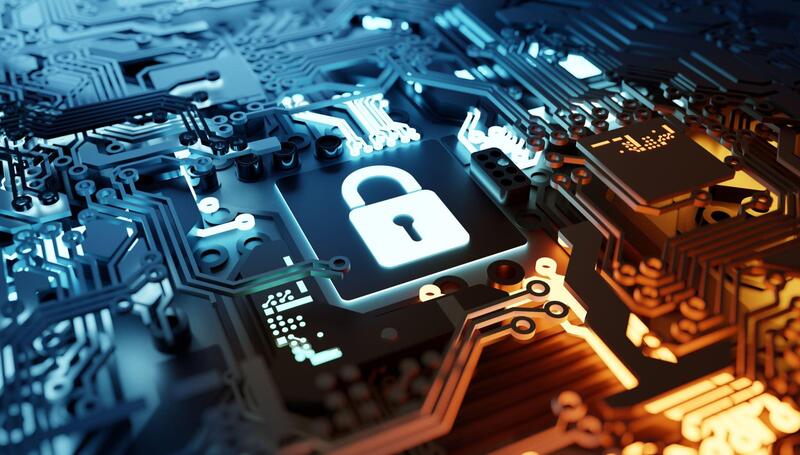Cybersecurity: A Top Priority Amidst Growing Threats
In today's digital age, cybersecurity remains a top priority for businesses worldwide. As organizations increasingly rely on digital infrastructure, they face ever-evolving cyber threats that grow more sophisticated and dangerous by the day. Recent incidents, such as the CrowdStrike outage and the massive Disney data leak, underscore the critical importance of robust security measures.

The Rise of Sophisticated Cyber Threats
The landscape of cyber threats has evolved significantly over the past decade, driven by advancements in technology and the increasing interconnectedness of global digital infrastructure. What was once a domain dominated by individual hackers and relatively unsophisticated malware has now become a battleground for highly organized and well-funded adversaries, including cybercriminal syndicates, hacktivist groups, and nation-state actors.
1. Advanced Persistent Threats (APTs)
One of the most concerning developments in the cyber threat landscape is the rise of Advanced Persistent Threats (APTs). These are prolonged and targeted cyberattacks in which an intruder gains access to a network and remains undetected for an extended period. Unlike traditional cyberattacks, which aim for a quick strike, APTs focus on stealth, persistence, and long-term exploitation. The attackers often use sophisticated techniques to bypass security measures, such as exploiting zero-day vulnerabilities, creating custom malware, and employing social engineering tactics.
APTs are typically motivated by espionage, whether for commercial, political, or military gain. Nation-states often back these attacks, using them to steal sensitive data, disrupt critical infrastructure, or influence geopolitical events. For example, attacks like the SolarWinds breach, attributed to Russian state-sponsored hackers, demonstrated the devastating impact of APTs on both public and private sector entities.
2. Ransomware Evolution
Ransomware attacks have also become more sophisticated and damaging. Traditionally, ransomware would encrypt a victim's data and demand a ransom for the decryption key. However, modern ransomware attacks often involve double extortion, where attackers not only encrypt the data but also exfiltrate it. They then threaten to publicly release the data if the ransom is not paid, significantly increasing the pressure on the victim.
Ransomware-as-a-Service (RaaS) has emerged as a major trend, lowering the barrier to entry for cybercriminals. RaaS platforms provide pre-built ransomware tools that even individuals with limited technical expertise can deploy. This has led to an increase in the frequency and severity of ransomware attacks, targeting businesses of all sizes across various industries.
3. Supply Chain Attacks
Supply chain attacks have become a major concern as well. These attacks involve compromising a third-party vendor or service provider to infiltrate the networks of multiple organizations downstream. The SolarWinds attack is a prime example of this tactic, where attackers inserted malicious code into the company's software updates, which were then distributed to thousands of customers, including government agencies and Fortune 500 companies.
Supply chain attacks are particularly dangerous because they exploit trusted relationships between organizations and their vendors. By compromising a single supplier, attackers can potentially gain access to hundreds or even thousands of target networks, amplifying the impact of their attack.
4. Artificial Intelligence and Machine Learning in Cyberattacks
As defenders increasingly turn to artificial intelligence (AI) and machine learning (ML) to enhance their cybersecurity measures, attackers are also leveraging these technologies to launch more effective and elusive attacks. AI and ML can be used to automate the creation of malware, identify and exploit vulnerabilities faster, and even mimic human behavior to bypass security systems.
For example, AI-powered phishing attacks can craft highly personalized and convincing emails by analyzing social media profiles and other publicly available data. These emails are much harder to detect and avoid compared to traditional phishing attempts.
5. State-Sponsored Cyber Warfare
State-sponsored cyber warfare has emerged as a significant threat, with nation-states using cyberattacks as a tool for espionage, sabotage, and influence operations. These attacks are often highly sophisticated and can target critical infrastructure, such as power grids, financial systems, and communication networks. The motivations behind these attacks range from disrupting rival nations' economies to stealing intellectual property and conducting political espionage.
For instance, attacks attributed to state-sponsored groups like North Korea's Lazarus Group, China's APT41, and Russia's Fancy Bear have targeted financial institutions, government agencies, and defense contractors, among others. These groups often operate with significant resources and expertise, making them formidable adversaries.

The Impact of Data Breaches
Data breaches have become one of the most alarming consequences of cyberattacks, affecting organizations across all sectors. When a data breach occurs, sensitive information—ranging from personal data to intellectual property—can be exposed, leading to severe financial, legal, and reputational repercussions.
1. Financial Consequences
The financial impact of a data breach can be staggering. Direct costs include expenses related to incident response, forensic investigations, customer notification, and legal fees. Companies may also face fines and penalties for failing to comply with data protection regulations like the General Data Protection Regulation (GDPR) or the California Consumer Privacy Act (CCPA). These fines can reach into the millions, depending on the severity of the breach and the number of individuals affected.
Indirect costs, such as lost business opportunities, damage to stock prices, and reduced customer trust, can be even more devastating. Following a breach, companies often see a decline in revenue as customers become wary of engaging with an organization that has failed to protect their data.
2. Legal and Regulatory Ramifications
In addition to financial losses, data breaches can result in significant legal challenges. Affected individuals may file lawsuits against the company for failing to safeguard their information, leading to costly legal battles and settlements. Moreover, regulatory bodies may conduct investigations to determine if the company violated any data protection laws.
In some cases, data breaches can result in long-term legal obligations, such as the requirement to provide free credit monitoring services to affected individuals for several years. The legal fallout can drain resources and divert attention from core business activities, further compounding the breach's impact.
3. Reputation Damage
The reputational damage caused by a data breach can be profound and long-lasting. Trust is a critical factor in the relationship between a company and its customers, and a data breach can severely undermine that trust. Customers expect organizations to protect their personal information, and when that expectation is not met, they may choose to take their business elsewhere.
The negative publicity surrounding a data breach can also harm a company's brand image, making it more difficult to attract new customers and retain existing ones. In some cases, the damage to reputation can be so severe that it leads to a company's decline or even its demise.
4. Operational Disruption
A data breach can cause significant operational disruption as organizations scramble to contain the breach, investigate its cause, and restore affected systems. This disruption can result in downtime, lost productivity, and delayed business processes. For companies that rely on digital platforms to conduct business, the impact can be particularly severe, leading to further financial losses and customer dissatisfaction.
Moreover, the aftermath of a breach often requires organizations to overhaul their security measures, which can be a time-consuming and resource-intensive process. This diversion of resources can hinder the company's ability to focus on growth and innovation.

The Need for Robust Security Measures
Given the increasing sophistication of cyber threats and the devastating impact of data breaches, it is more crucial than ever for organizations to implement robust security measures. These measures must be comprehensive, proactive, and adaptable to the evolving threat landscape.
1. Defense-in-Depth Strategy
A defense-in-depth strategy involves layering multiple security measures to protect against different types of threats. This approach ensures that even if one security layer is breached; others remain in place to prevent or mitigate the attack. Key components of a defense-in-depth strategy include:
Firewalls and Intrusion Detection/Prevention Systems (IDPS):
These tools act as the first line of defense, monitoring and filtering network traffic to block unauthorized access and detect suspicious activity.
Encryption:
Encrypting sensitive data both at rest and in transit ensures that even if it is intercepted, it cannot be easily read or used by attackers.
Access Controls:
Implementing strict access controls, such as multi-factor authentication (MFA) and role-based access control (RBAC), limits who can access sensitive information, reducing the risk of insider threats and unauthorized access.
Endpoint Protection:
Deploying endpoint protection solutions, such as antivirus software and endpoint detection and response (EDR) tools, helps secure devices connected to the network from malware and other threats.
2. Continuous Monitoring and Threat Intelligence
To effectively defend against sophisticated cyber threats, organizations must adopt continuous monitoring and threat intelligence practices. Continuous monitoring involves real-time observation of network activity, looking for signs of potential threats or vulnerabilities. This proactive approach allows for the early detection of suspicious behavior, enabling swift responses to mitigate risks.
Threat intelligence, on the other hand, involves gathering and analyzing information about current and emerging threats. By understanding the tactics, techniques, and procedures (TTPs) used by attackers, organizations can better prepare their defenses and stay ahead of potential threats. Sharing threat intelligence with industry peers and participating in information-sharing initiatives can also enhance an organization's overall security posture.
3. Regular Security Audits and Vulnerability Assessments
Conducting regular security audits and vulnerability assessments is essential for identifying and addressing potential weaknesses in an organization's security framework. These assessments involve systematically evaluating systems, applications, and processes to uncover vulnerabilities that could be exploited by attackers.
By regularly testing their defenses, organizations can ensure that they remain resilient against evolving threats. This process also helps verify compliance with regulatory requirements and industry standards, reducing the risk of legal and financial penalties.
4. Employee Training and Awareness Programs
Human error remains one of the leading causes of data breaches, making employee training and awareness programs a critical component of any cybersecurity strategy. Employees must be educated on the latest cybersecurity threats, such as phishing, social engineering, and ransomware, and trained on how to recognize and respond to these threats.
Regular training sessions, simulated phishing attacks, and security awareness campaigns can help reinforce best practices and create a security-conscious culture within the organization. By empowering employees to act as the first line of defense, companies can significantly reduce the risk of a successful cyberattack.
5. Incident Response Planning
Even with the best defenses in place, no organization is entirely immune to cyberattacks. Therefore, having a well-defined and regularly updated incident response plan is crucial. This plan should outline the steps to take in the event of a security breach, including how to contain the attack, assess the damage, communicate with stakeholders, and recover from the incident.
An effective incident response plan also involves regular drills and simulations to ensure that all team members know their roles and responsibilities during a crisis. By preparing for the worst, organizations can minimize the impact of a breach and recover more quickly.
Conclusion
As cyber threats continue to evolve, businesses must remain vigilant and prioritize cybersecurity at all levels. The CrowdStrike outage and Disney data leak are stark reminders that the stakes are higher than ever. By investing in robust security measures and fostering a culture of security awareness, organizations can better protect themselves against the growing tide of cyberattacks and safeguard their most valuable assets—data and reputation.
Newsletter to recieve
our latest company updates
Comment